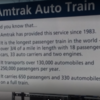Here is some simple math on how tractive effort is calculated:
1) Back in the days of DC traction units, the EMD Engineering Dept. determined that about a 17% adhesion level was obtainable under virtually all conditions. Thus, a GP40-2 weighing 250,000 pounds, for example, would have a continuous tractive effort of 42,500 pounds at the coupler, while and SD40-2 weighing 390,000 pounds would have a continuous tractive effort of 66,300 pounds at the coupler.
Now, under ideal rail conditions, i.e. hot & dry, adhesion levels approaching 20% to as high as 25% were attainable, with corresponding dramatic increases in tractive effort (the GP40-2 would thus be 62,500 pounds TE, and the SD40-2 would be 97,500 pounds TE, both at 25% adhesion). The weight of the locomotive multiplied by the percent of adhesion, gives the tractive effort.
2) Now, in the modern era of AC traction and highly sophisticated wheel speed control systems, adhesion levels of over 40% are readily obtained. Thus, for example, a BN/BNSF SD70MAC, weighing about 400,000 pounds, can achieve a tractive effort of 160,000 pounds! Sometimes even more on a nice hot dry day in the northern Wyoming coal fields.
Such tractive effort number have been recorded in the EMD Engineering Test Car, with the use of an instrumented coupler equipped with strain gauge, which sends data to the computers in the test car.






